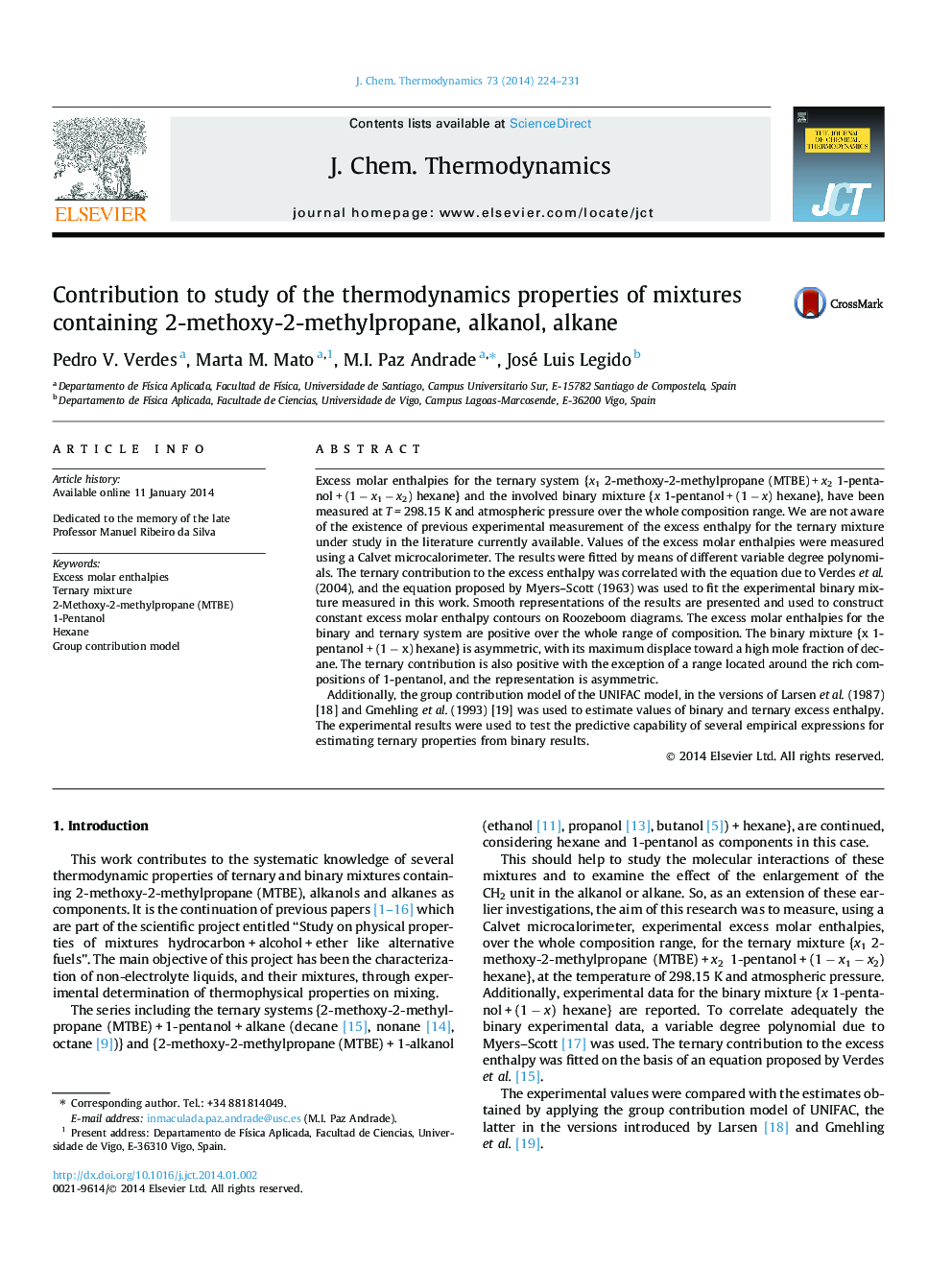| Article ID | Journal | Published Year | Pages | File Type |
|---|---|---|---|---|
| 215494 | The Journal of Chemical Thermodynamics | 2014 | 8 Pages |
•Experimental enthalpies for the mixtures MTBE + pentanol + hexane and pentanol + hexane were measured.•No experimental ternary values were found in the currently available literature.•Excess molar enthalpies are positive over the whole range of composition.•The ternary contribution is also positive with the exception of a range located around the rich compositions of 1-pentanol.
Excess molar enthalpies for the ternary system {x1 2-methoxy-2-methylpropane (MTBE) + x2 1-pentanol + (1 − x1 − x2) hexane} and the involved binary mixture {x 1-pentanol + (1 − x) hexane}, have been measured at T = 298.15 K and atmospheric pressure over the whole composition range. We are not aware of the existence of previous experimental measurement of the excess enthalpy for the ternary mixture under study in the literature currently available. Values of the excess molar enthalpies were measured using a Calvet microcalorimeter. The results were fitted by means of different variable degree polynomials. The ternary contribution to the excess enthalpy was correlated with the equation due to Verdes et al. (2004), and the equation proposed by Myers–Scott (1963) was used to fit the experimental binary mixture measured in this work. Smooth representations of the results are presented and used to construct constant excess molar enthalpy contours on Roozeboom diagrams. The excess molar enthalpies for the binary and ternary system are positive over the whole range of composition. The binary mixture {x 1-pentanol + (1 − x) hexane} is asymmetric, with its maximum displace toward a high mole fraction of decane. The ternary contribution is also positive with the exception of a range located around the rich compositions of 1-pentanol, and the representation is asymmetric.Additionally, the group contribution model of the UNIFAC model, in the versions of Larsen et al. (1987) [18] and Gmehling et al. (1993) [19] was used to estimate values of binary and ternary excess enthalpy. The experimental results were used to test the predictive capability of several empirical expressions for estimating ternary properties from binary results.
Graphical abstractFigure optionsDownload full-size imageDownload as PowerPoint slide
